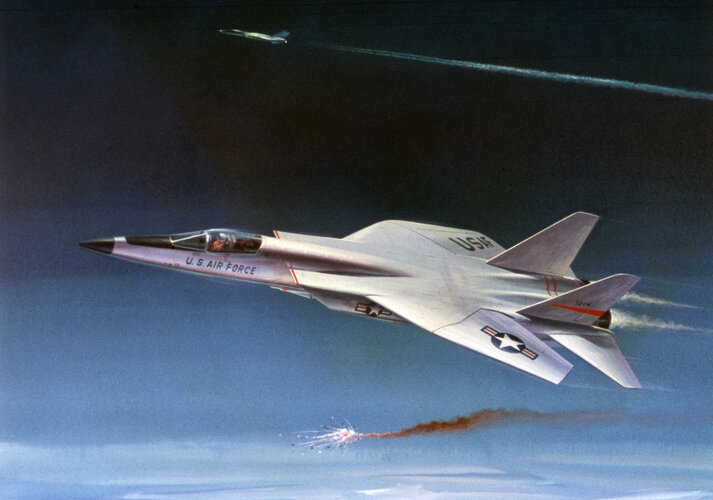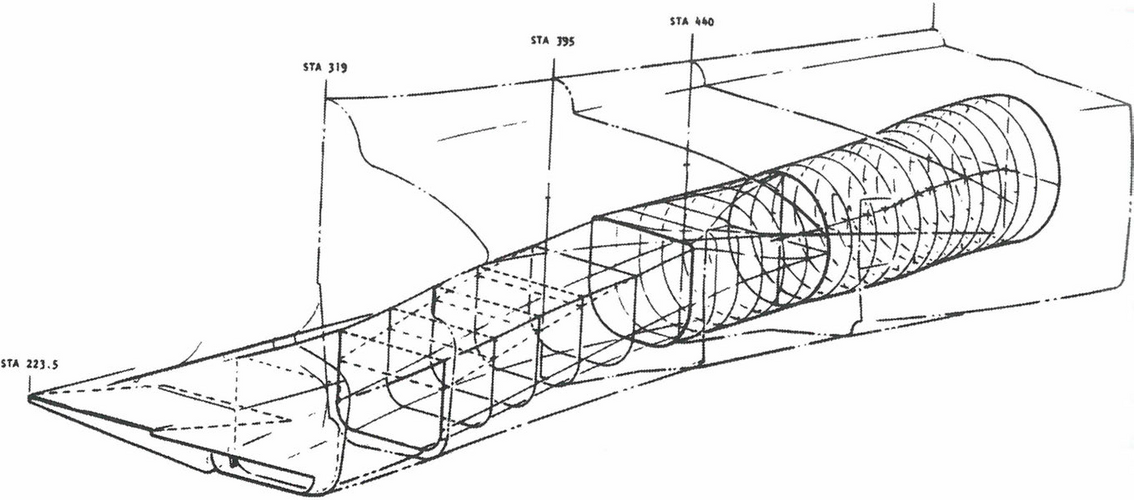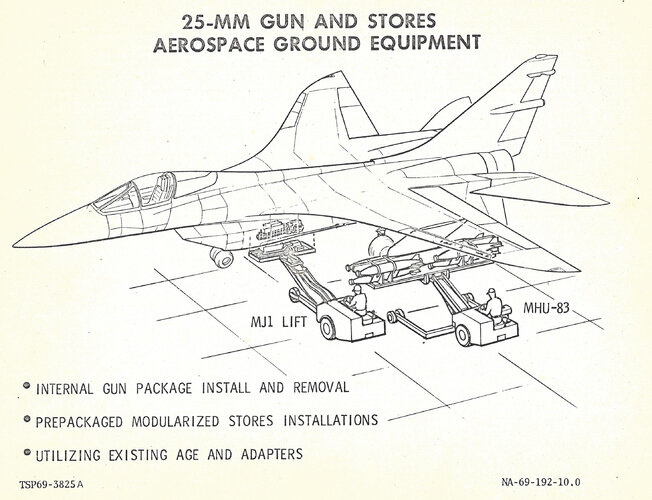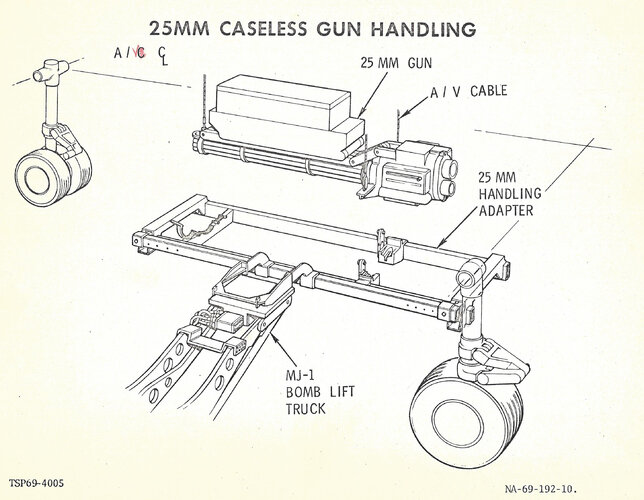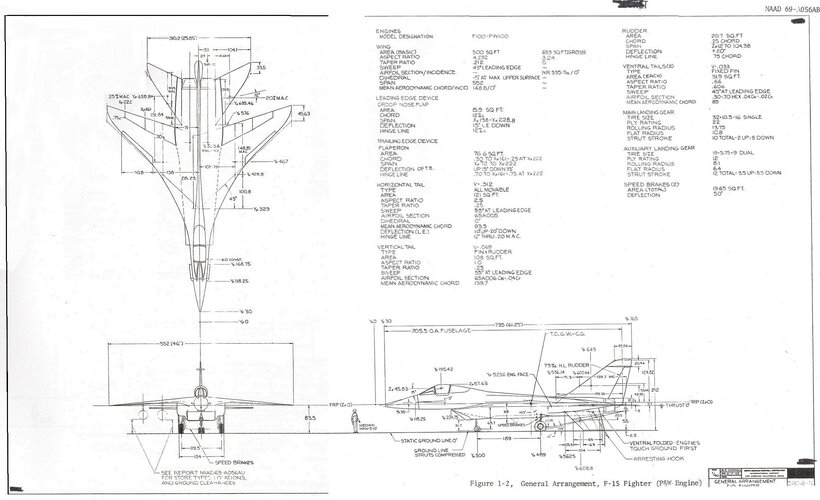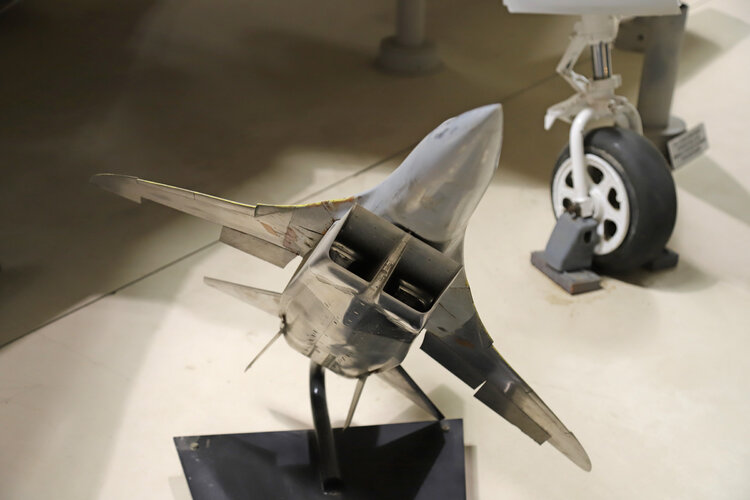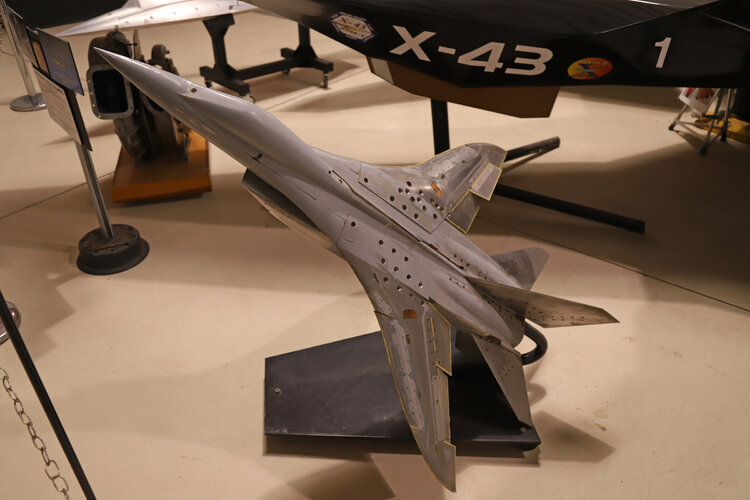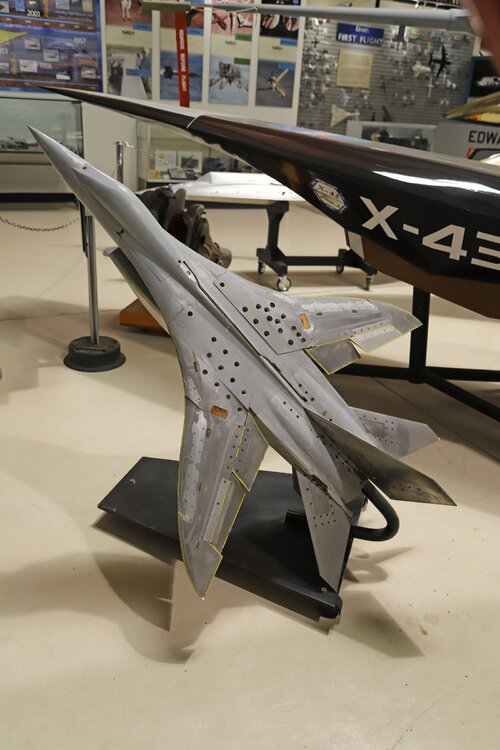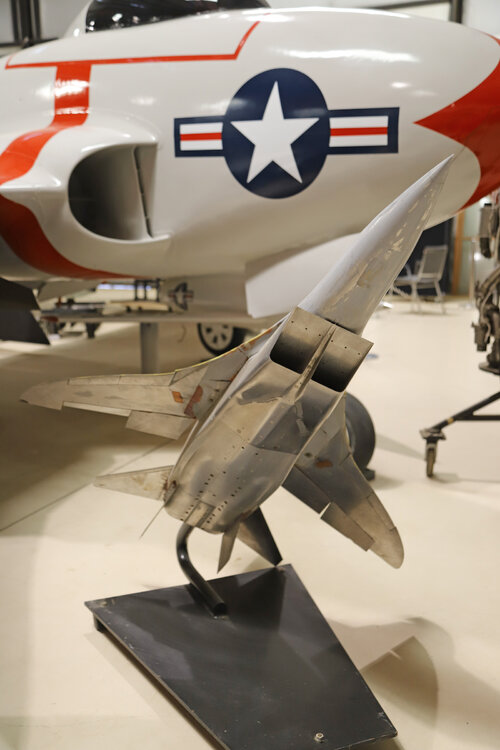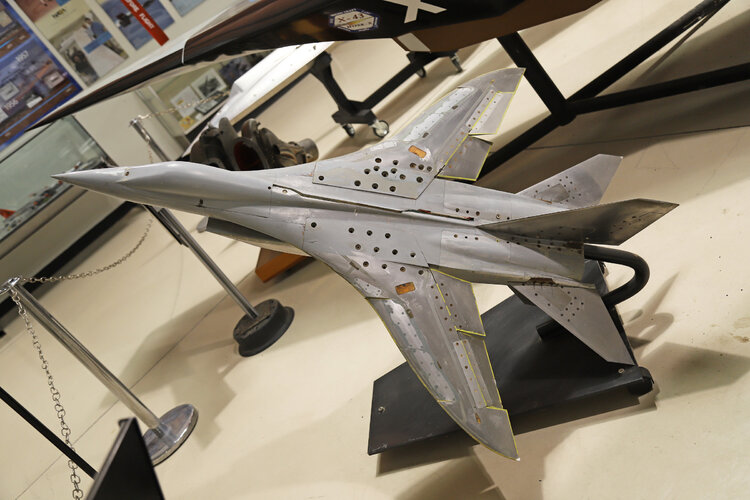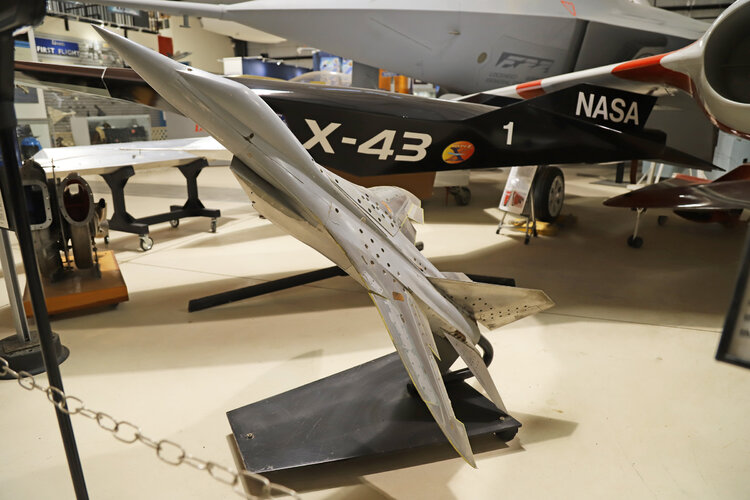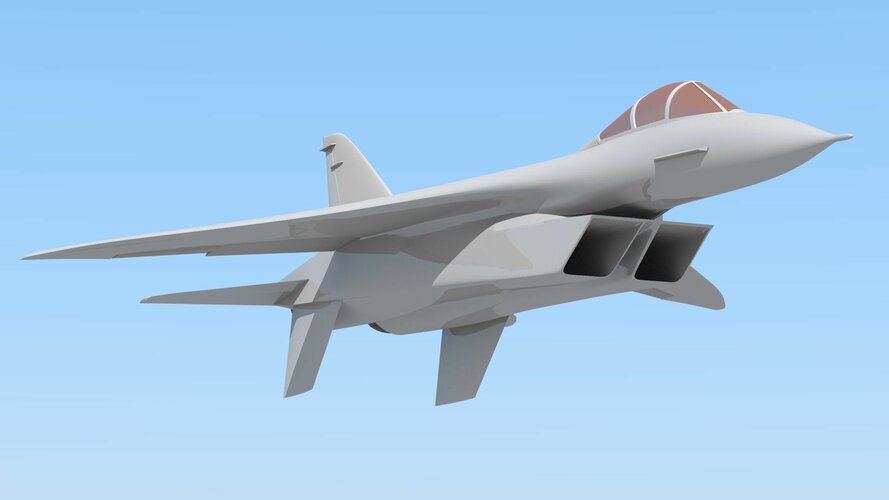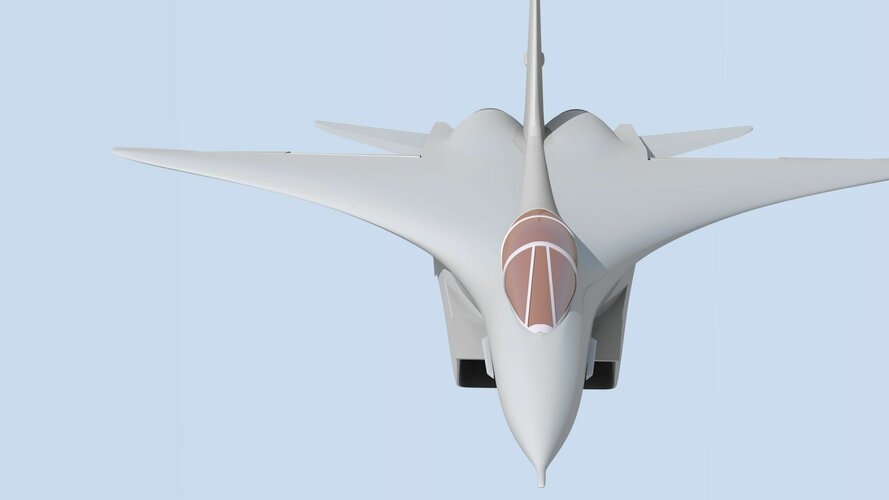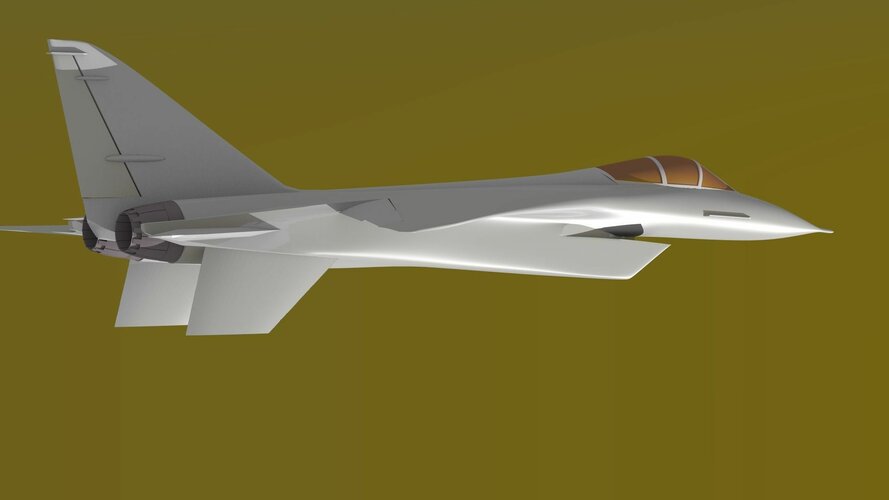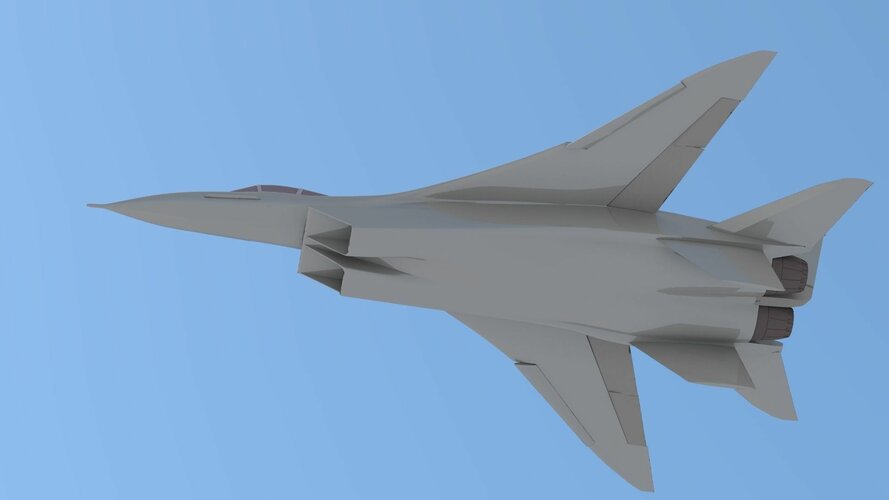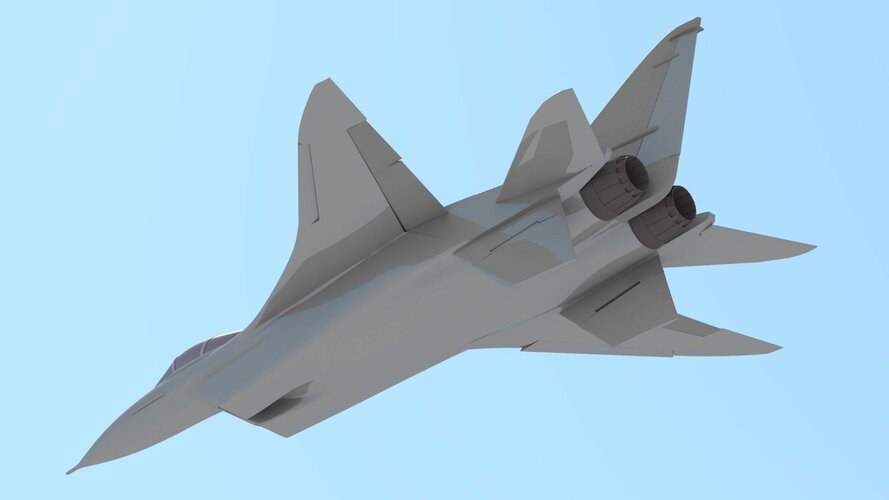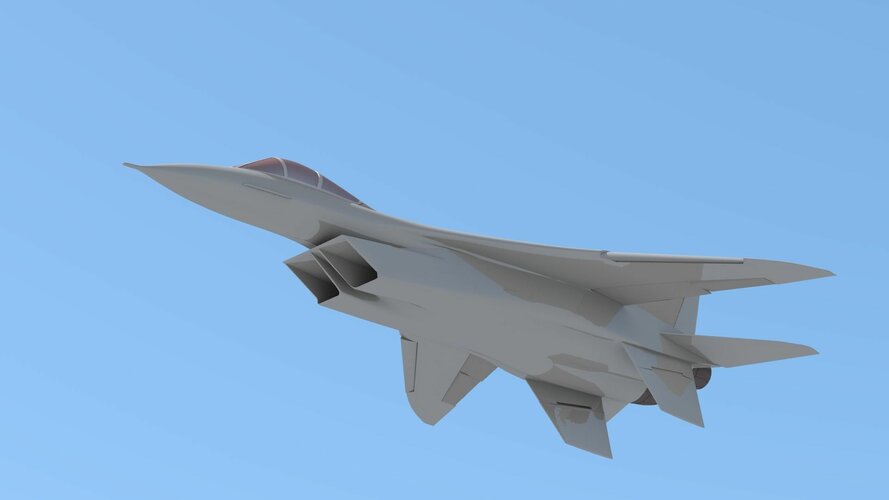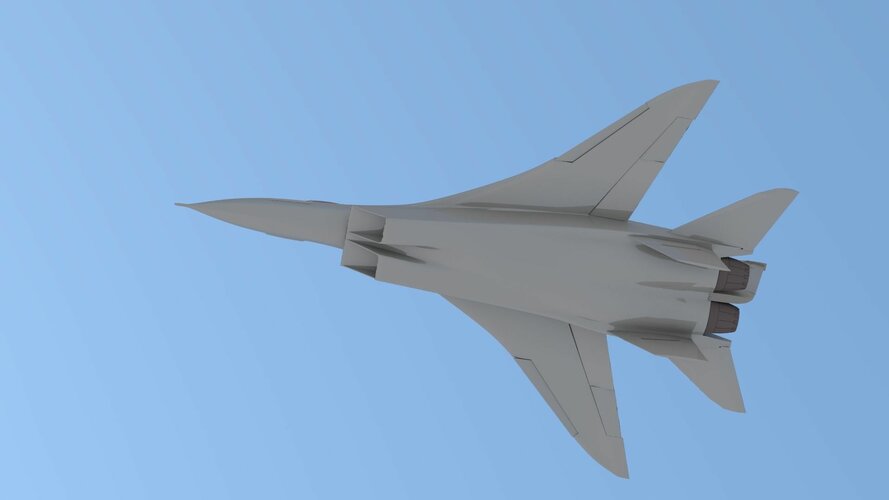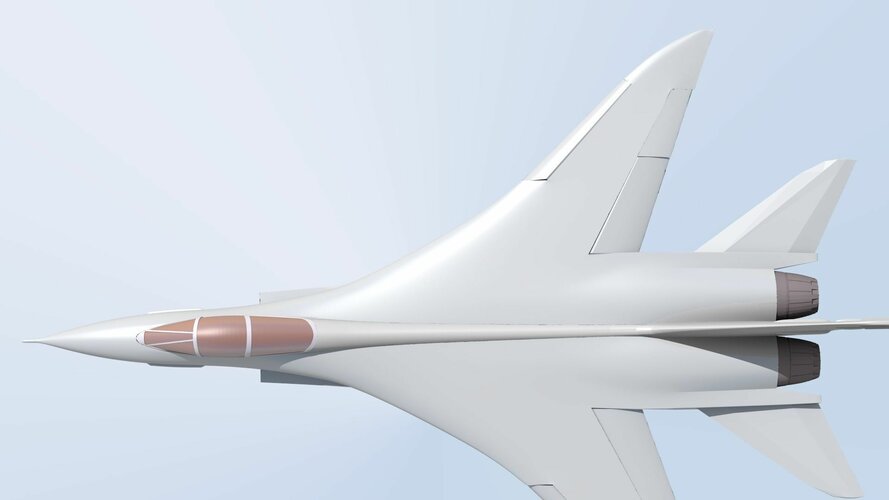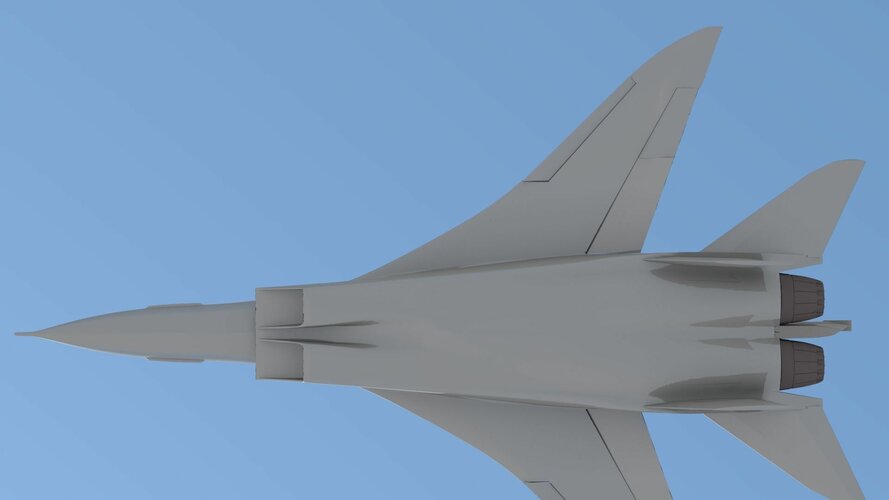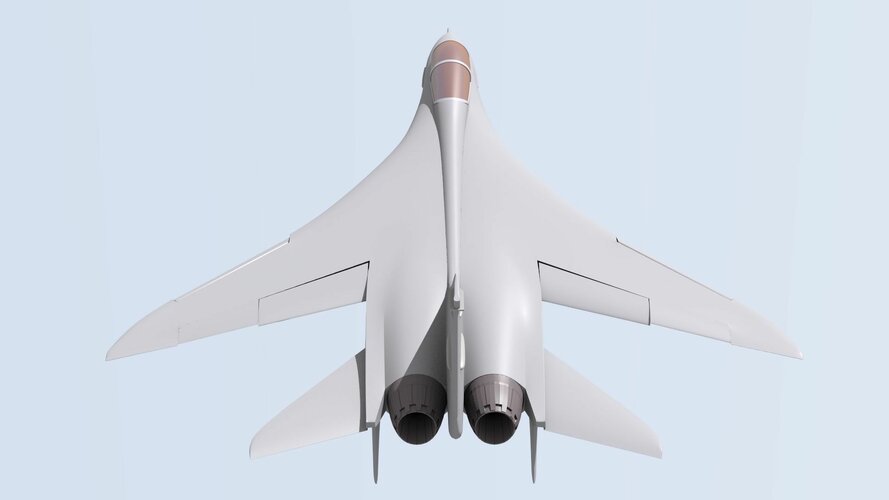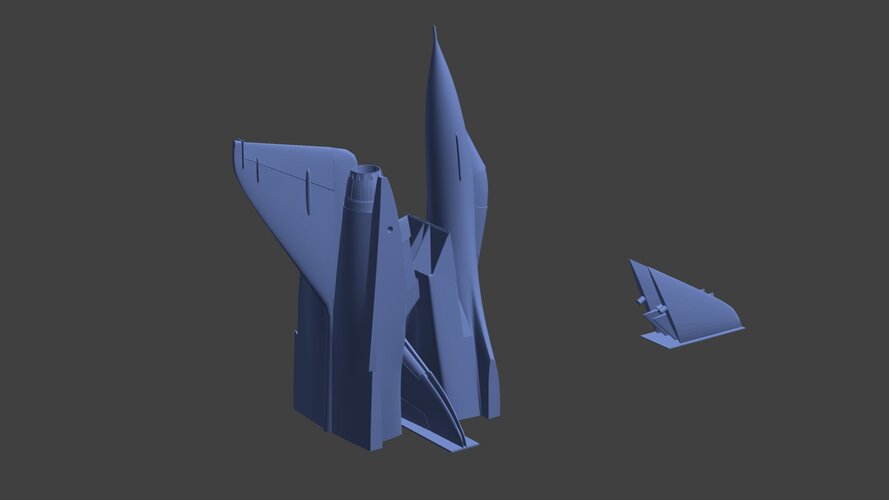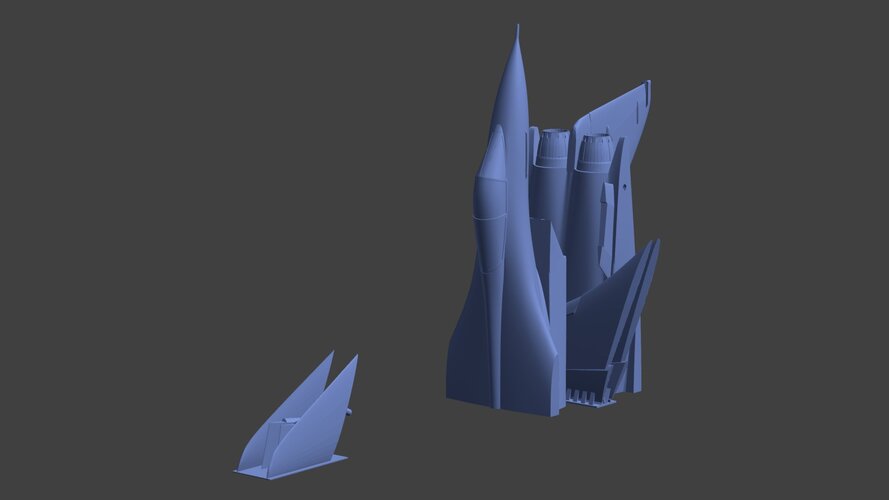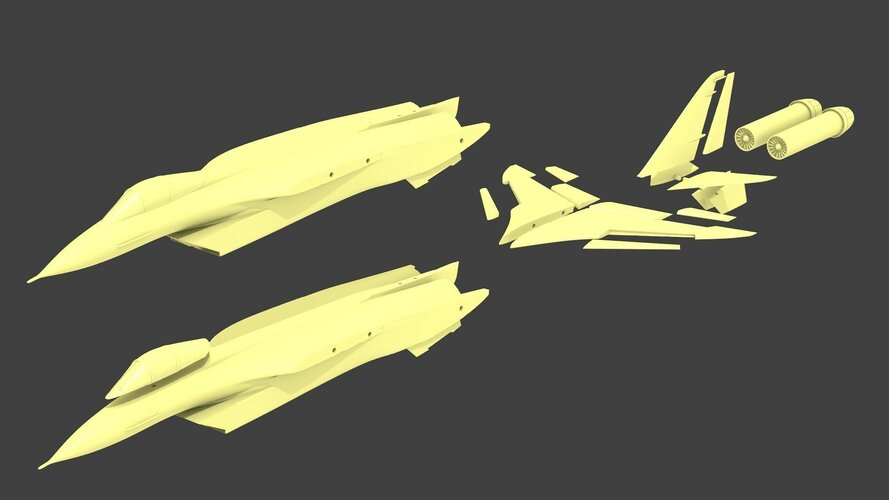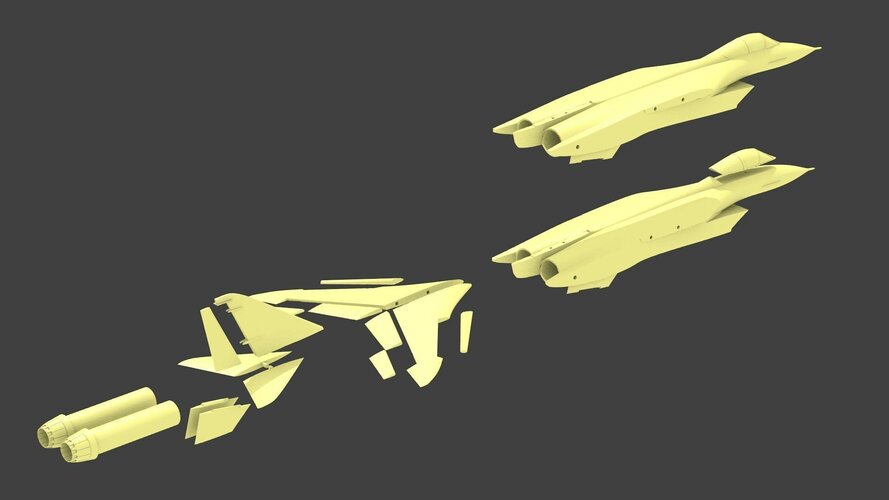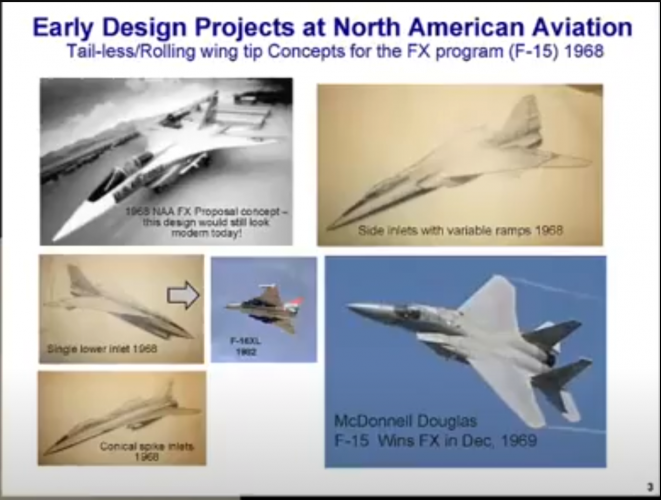The production of the MiG-21, which was massively built at three plants at once, increased from year to year, amounting to more than 550 aircraft in 1963 (351 fighter aircraft delivered to Gorky Plant No. 21 and 200 - Moscow Plant No. 30, Tbilisi Plant No. 31 was engaged in the production of “sparks” "). The next year, 1964, the order increased to 720 fighters (420 plants number 21 and 300 - plant number 30). Constantly working on the machine, its creators made the necessary changes and improvements to the design and composition of airborne equipment and weapons.
However, along with the advantages, the MiG-21 as the main destroyer the concept of the combat properties of an aircraft, as applied to a fighter, implies a combination of its qualities and characteristics, such as the most important flight tactical data (maximum speed, climb rate, ceiling, maneuverability, range and duration of flight), armaments and equipment that allow destroying an air enemy. As determined by the Air Force tactics course, such a combination of combat properties was intended to provide the fighter with the opportunity to "quickly enter the combat zone, quickly catch up with the enemy and, using advantages in speed and maneuvering qualities, eliminate the tactical advantages of the enemy and achieve victory over him."
The MiG-21PF had flight characteristics at the level of a modern aircraft of this class: speed for two sound, a ceiling of 19,200 m, excellent rate of climb and maneuverability. The plane gained ten kilometers in just 2.7 minutes, and at low altitudes it was able to twist turns within a kilometer radius. The range characteristics looked somewhat worse (in which domestic fighters traditionally lagged behind competitors): the practical range of the MiG-21PF without suspensions was 1140 km, one and a half to two times inferior to Western aircraft of the same destination (the F-104G Starfighter has a range with a reserve fuel in internal tanks alone was 2,000 km, while the then-new F-4C Phantom II, even with a set of missile weapons, reached a range of 2,600 km).
As the changes were introduced, the "twenty- first" gained weight, which could not but affect the climb and even more "sagging" range. Attempts to add fuel reserves were unsuccessful, because the aircraft was heavy and the wing load was growing with attendant negative consequences. The low range resulted in limited boundaries of interception and radius of the aircraft during the entire set of tasks, and the duration of the flight, even with an outboard tank not exceeding 2.5 hours, reduced the ability of a fighter to cover ground troops or patrol a protected area. The maximum line of interception of the MiG-21PF using the PTB was determined to be 400-530 km, while the Starfighter with a set of missile weapons and hanging tanks was 120011 11 1430 km and the Phantom had 1820-1940 km. Meanwhile, the fuel supply on board the fighter was important not only in terms of range: the sufficient flight duration allowed the pilot to feel more confident when performing a combat mission, without the risk of being with dry tanks away from the airfield at the most critical moment.
The state of affairs with sighting equipment and aircraft weapons left much to be desired. The MiG-21PF was equipped with the RP-21 radar sight (another name TsD-30T, that is, the “target rangefinder”), which was believed to provide the fighter with “all-weather use and the possibility of reliable destruction of air targets at sufficiently large ranges day and night in simple and complex weather conditions." The capabilities of the radar station made it possible to detect an air target such as a Tu-16 bomber at a distance of 18-20 km with a capture for auto tracking from 8-10 km. The armament of the aircraft consisted of only two R-3S close combat missiles with thermal homing heads with a launch range of up to 7.6 km, instead of which RS-2US missiles with “beam-rider” guidance with a firing range of up to 6 km could be used. The RS-2US, guided by the beam of the radar operating in the target locking mode , could not be classified as a modern weapon: they allowed attacks to be carried out exclusively from the rear hemisphere of the target in the 1/4 perspective only with a slight speed excess of the target over their fighter (otherwise missiles lacked energy), in addition, after launch it was necessary to keep the radar beam on target throughout the entire flight of the rocket, avoiding any manoeuvring. The fighter’s equipment with RS-2US missiles was a necessary measure, since the self-guided R-3S as the main set of weapons did not provide all-weather use - it was indicated that “R-3S shooting is possible only outside the clouds,” and they could be used almost only with visual visibility of the target and at a short distance. The limited area of possible launches, the short range and the inability to use fighter missile armaments in manoeuvrable aerial combat : in practice, missile firing was carried out from a distance of no more than 2.5 km and only at the tail of the target in pursuit, otherwise capture and tracking enemy aircraft were unlikely. When working “on the ground”, the MiG-21PF could carry only a couple of bombs or missile units, and the pilot had a collimator-type PKI sight with very limited capabilities, which practically remained at the level of wartime products in effectiveness , which is why aiming was usually carried out “by eye” ". Confirmation of the low efficiency of the fighter’s armament was received messages from Vietnam, where the MiG-21 first entered the battle. Missile attacks using the R-3S were carried out by Vietnamese pilots from ranges of 1200-2300 m,
but only a third of them were successful.
In the same place in Vietnam there was a debut of "Phantom". The very appearance of the F-4 was an event in the aviation world, impressing the leadership of the Soviet Air Force. The aircraft, created for naval aviation, was very successful and was also in demand by the US Air Force. In addition to an impressive set of flight characteristics, the F-4 had multi-purpose capabilities, combining the qualities of an interceptor and a strike aircraft, and it was very effective in both roles (previously, in the usual way, obsolete fighters, unsuitable in the former quality, and fighter-bomber were attributed to fighter-bomber newer did not really answer the first component of the name). The adoption of the Phantom at the same time in naval aviation and the Air Force was not quite a common occurrence - in addition to various service conditions and its own set of requirements for aircraft, these types of aviation have long competed with each other and in the “interspecific” competition they exclusively used " cars. To a considerable extent, the precedent of equipping naval aviation and the air force with a single type of aircraft became the implementation of the new Secretary of Defence Robert McNamara’s course towards universalization and unification, which became epidemic in the then US armed forces. The Minister of War, who began his career as an accountant and volunteered to join the army, devoted all his talents to organizing supplies and placing orders when creating new models of military equipment. However, in addition to aspirations in favor of saving and putting things in order in equipping the army, the new aircraft was indeed a godsend, allowing 12 MiG-21PFM fighters at the airport. Due to the small fuel supply in the aircraft tanks, most flights were carried out using a 12- neck suspended fuel tank to achieve a more efficient solution to the diverse set of tasks of a machine of this class.
Since 1961, the F-4 mass production began, the deliveries of which immediately became massive, reaching the level of three to four or more hundreds of aircraft annually. As a striking machine, the Phantom could carry an impressive combat load of up to 7250 kg, having navigation and aircraft navigation systems important for use in this capacity, as well as an electronic fire control system with a ballistic computer and an indicator of tactical conditions, which made it possible to hit targets in any weather conditions. When used as a fighter, the Phantom used the advantages of a powerful radar (by the way, fleet and air force aircraft still had stations and other equipment of various types) with a long detection and guidance range, a thermal direction finder and, most importantly, an impressive arsenal of weapons, which included up to four AIM-7 Sparrow medium-range missiles and four AIM-9 Sidewinder close combat missiles . The presence of the second crew member on board as an operator made it possible to manage quite effectively with the available sighting and navigation equipment and weapons. The ability to detect targets at a considerable distance and defeat enemy aircraft with missile launches at ranges up to 16-18 km gave the F-4 enviable opportunities in aerial combat.
None of the domestic front-line fighters possessed such qualities in terms of sighting equipment and weapons. Even for the most modern MiG-21 at that time, the Phantom looked like an extremely dangerous opponent. The MiG-21 was lighter and more manoeuvrable, with good accelerating characteristics and rate of climb, but when meeting with the Phantom it was able to detect and shoot down a Soviet fighter even before reaching the attack line, allowing the twenty- first to spot the enemy and use weapons, imposing its advantages in manoeuvrable combat. However, as we have already said, the situation in the domestic fighter aircraft was not regarded as intolerant and did not cause much concern to the military. On the approach were new modifications of the MiG-21 with an increased fuel reserve and four weapon suspension points (such work was already completed in 1963), the installation of a new automatic aiming system ASP-PFD and a thermal sight (it appeared already on the next version of the MiG-21PFM), expanding the composition of weapons and equipment.
In the reserve, the designers had deeper studies that could be the basis of the future fighter of the new generation. Among the promising topics was the E-8M project with the S-23P weapon system and an increased wing area, which provided an increase in the bearing qualities and altitude of the machine. In another version, the E-8M was supposed to get side air intakes instead of the ventral, which, due to its proximity to the earth's surface, was too vulnerable to any debris that threatened to damage the engine. Another disadvantage of the ventral air intake with the anterior landing gear attached underneath was the excessive parking angle of the aircraft, which adversely affected take-off and landing - during take-off the aircraft with its nose up was accelerated more slowly due to significant aerodynamic drag, and during landing it was necessary to maintain a smaller angle to avoid grazing betonki tail section. With all the evidence, it was also taken into account that the side air intakes were established as the most common intake device scheme on almost all foreign aircraft of this class, having managed to prove the validity of such a decision in the layout of the aircraft and the practicality in its operation.
The abandonment of the simplest and most effective frontal air intake, which was a thing of the past with the previous generation of aviation equipment, was primarily a tribute to the requirements for the placement of airborne equipment - radar stations with their large antenna mirror, the dimension of which largely determined the radar's ability to detect objects. The growth in the diameter of the radar antenna systems became decisive for the designation of the midship of the aircraft fuselage, literally crowding out air intakes “to the outskirts” and dictating the layout solution of the entire machine. The scheme with lateral air intakes at that time looked the most suitable, in which the air path to the engine by was emitting a moderate length, allowing to reduce pressure losses. At the same time, such a scheme released the internal layout volumes used to store the fuel supply, all kinds of systems and equipment, which were a real problem to squeeze into the machine with a central inlet device with extended air channels.
The development of a promising fighter was still conducted under the general name MiG-23 (although not yet specified by the governing documents). The name was conditional, since in the usual way such a name was assigned to the aircraft only with its adoption, having been spelled out in the relevant Government Decree. But for all involved in the work, it was obvious that the future machine, by definition, would be prepared for exactly this name given in advance as the next to the “twenty-first”, regardless of the choice of a specific project and the appearance of the fighter. Separate options within the framework of the topic were factory codes and names as “Product” or the definition “Aircraft” with the next index adopted in OKB-155 practice. The S-23 weapon system and K-23 missiles designed for it were worn by the same digital index. The future MiG-23 was to become a counterweight to the American F-4. However, it would be wrong to say that the fighter created was to be primarily the answer to the Phantom, which is supposed to be the main enemy. The new generation fighter was supposed to have qualities that were not inferior to the entire arsenal of the potential enemy’s armament (and being prepared), the capabilities of which were also taken into account and stipulated when setting the task. One of the reports of a somewhat later time included “tactical fighters of the F-105D,” Phantom”, “Mirage” IIIC, tactical bombers of the B-58 type, cruise missiles of the Mace type and Hound Dog, military transport aircraft and helicopters". Meanwhile
[PM2] , the requirements for the future machine were not only flight characteristics and the composition of equipment and weapons.
The issues of the basing of military aviation became urgent in the 60s. The development of supersonic speeds and the growth of other characteristics of new aircraft, which added in size and weight, were achieved by an equally significant increase in take-off and landing speeds. Landing speeds of combat aircraft reached a level of under 400 km/h, being at the limit acceptable to the pilot. The pursuit of flight speed, which for a long time dominated the minds of the military and the creators of aviation technology, turned into a growing accident rate on already difficult take-off and landing modes. The number of accidents and catastrophes during the development of new generation technology at the end of the 50s in our aviation reached 260 and more aircraft annually, the picture was not better observed abroad. According to the increased take-off and landing speeds, the required runway lengths increased. For the new aircraft that gained weight, field airfields and improvised platforms from which the post-war aviation worked were no longer suitable . The MiG-21PF during take-off with a pair of R-3S missiles and an outboard tank, the separation speed was 310-320 km/h, and the take-off distance reached 1500-1600 m. Landing speed was 275-300 km/h with a landing distance of 2300-2500 m, while the light "twenty-first" was considered to have good take-off and landing qualities, allowing its operation from airfields of the 2nd class (with a runway length of at least 2000 m). The problem was common to the whole new generation of combat aircraft, and the “probable enemy” pilots faced the same difficulties : neither the twenty-ton Phantom, nor the Thunderchief, nor even the relatively light Starfighter were adapted to work from unpaved airfields (and even physically incapable of this, having a pressure in the tyres of the undercarriage of 12-17 atm). As a result, with the development of jet technology, aviation turned out to be tied to stationary aerodromes with multi-kilometre concrete runways. Meanwhile, it was completely obvious that in the event of the outbreak of hostilities, the enemy would first try to disable the airfield network, and large airfields would inevitably be hit (as was demonstrated by the experience of post-war military conflicts). The use of nuclear weapons made the fate of large airbases a foregone conclusion, and the survival of aircraft located on them was primarily determined by the possibility of dispersal using alternate aerodromes and all kinds of suitable sites. The issue was all the more urgent because it determined not only the preservation of their aircraft from defeat at the very beginning of the conflict, but also the very possibility of its use in hostilities - it is clear that no one would be able to take off from broken airfields. It was necessary to take measures to ensure the possibility of combat aircraft from strips of limited size and dirt pads, and all other more or less suitable places, the network of which would allow the aircraft to be hidden from the enemy and increase the combat stability of units and formations.

